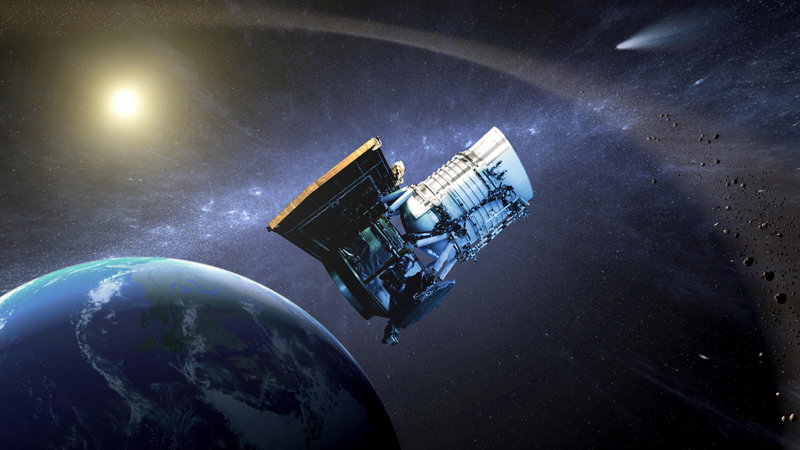NASA’s NEOWISE (Near-Earth Object Wide-field Infrared Survey Explorer) space telescope has completed work in orbit as part of a more than 10-year planetary defense mission that included searching for and studying asteroids and comets, including those that could pose a threat to Earth. Earth. Last Thursday, NASA specialists put the spacecraft into “sleep mode”, giving the command to turn off the transmitter.

Image source: NASA/JPL-Caltech
As previously planned, work on collecting scientific data was stopped on July 31, after which the telescope sent the last collected data and images to Earth.
«The NEOWISE mission has been an extraordinary success story because it has helped us better understand our place in the universe by tracking asteroids and comets that could be dangerous to us on Earth,” said Nicola Fox, associate administrator for NASA’s Science Mission Directorate.
The end of the mission was due to the fact that the orbit of the space telescope began to rapidly decline under the influence of increased solar activity. It is expected to burn up in the atmosphere in late 2024 or early 2025. Originally used as part of the WISE (Wide-field Infrared Survey Explorer) mission, the telescope, due to the lack of a coolant, was used to monitor the activity of asteroids and comets as part of the NEOWISE mission.
During its operation in low Earth orbit, NEOWISE made 1.45 million infrared measurements of more than 44,000 solar system objects. Of the more than 3,000 near-Earth objects discovered, 215 were identified for the first time using NEOWISE. The mission also discovered 25 new comets, including the famous Comet C/2020 F3 NEOWISE, discovered by the space telescope on March 27, 2020.
NASA is currently working on a new asteroid hunter, the NEO Surveyor (Near Earth Object Surveyor) infrared space telescope, which is expected to launch in mid-2028.